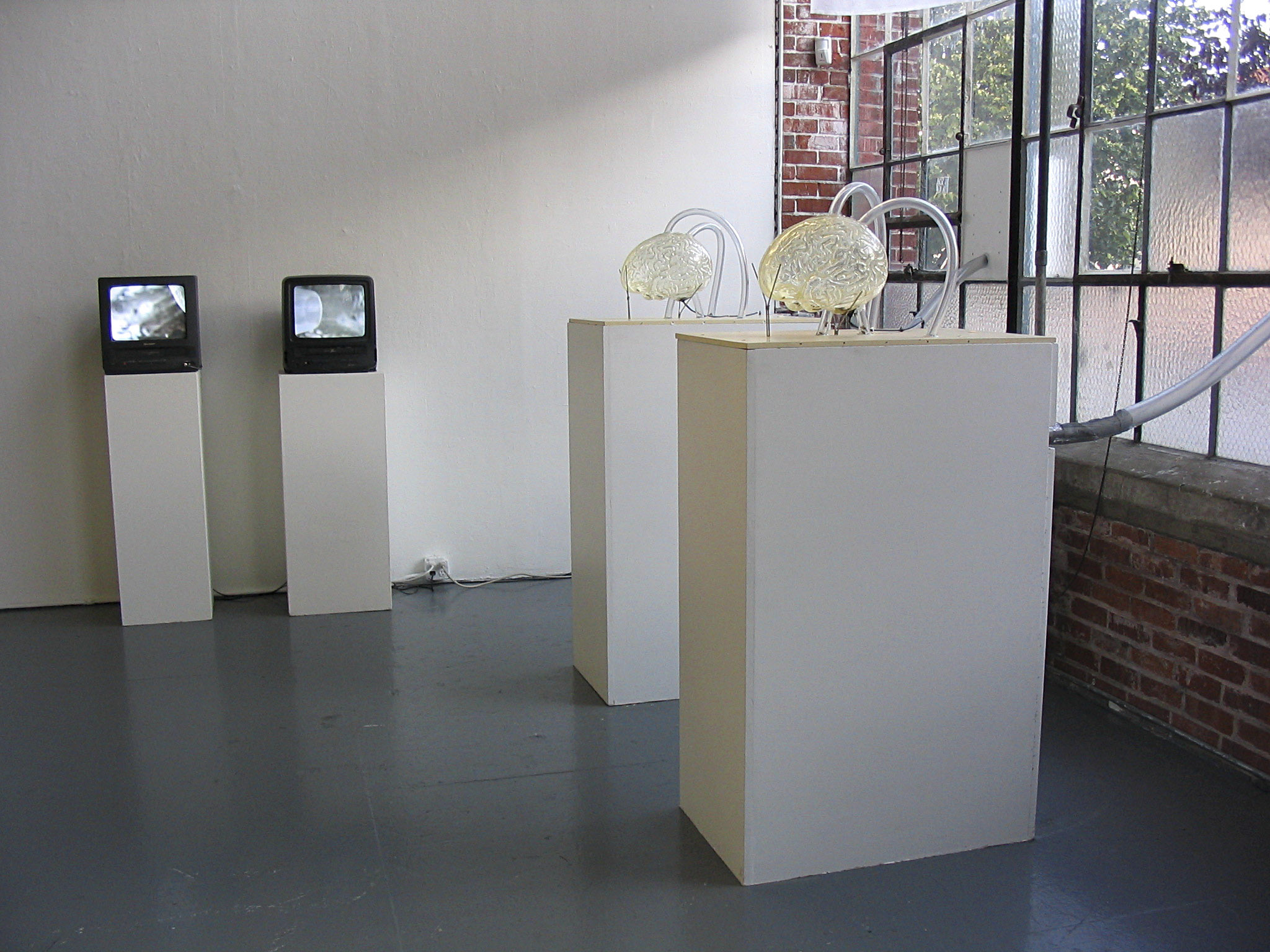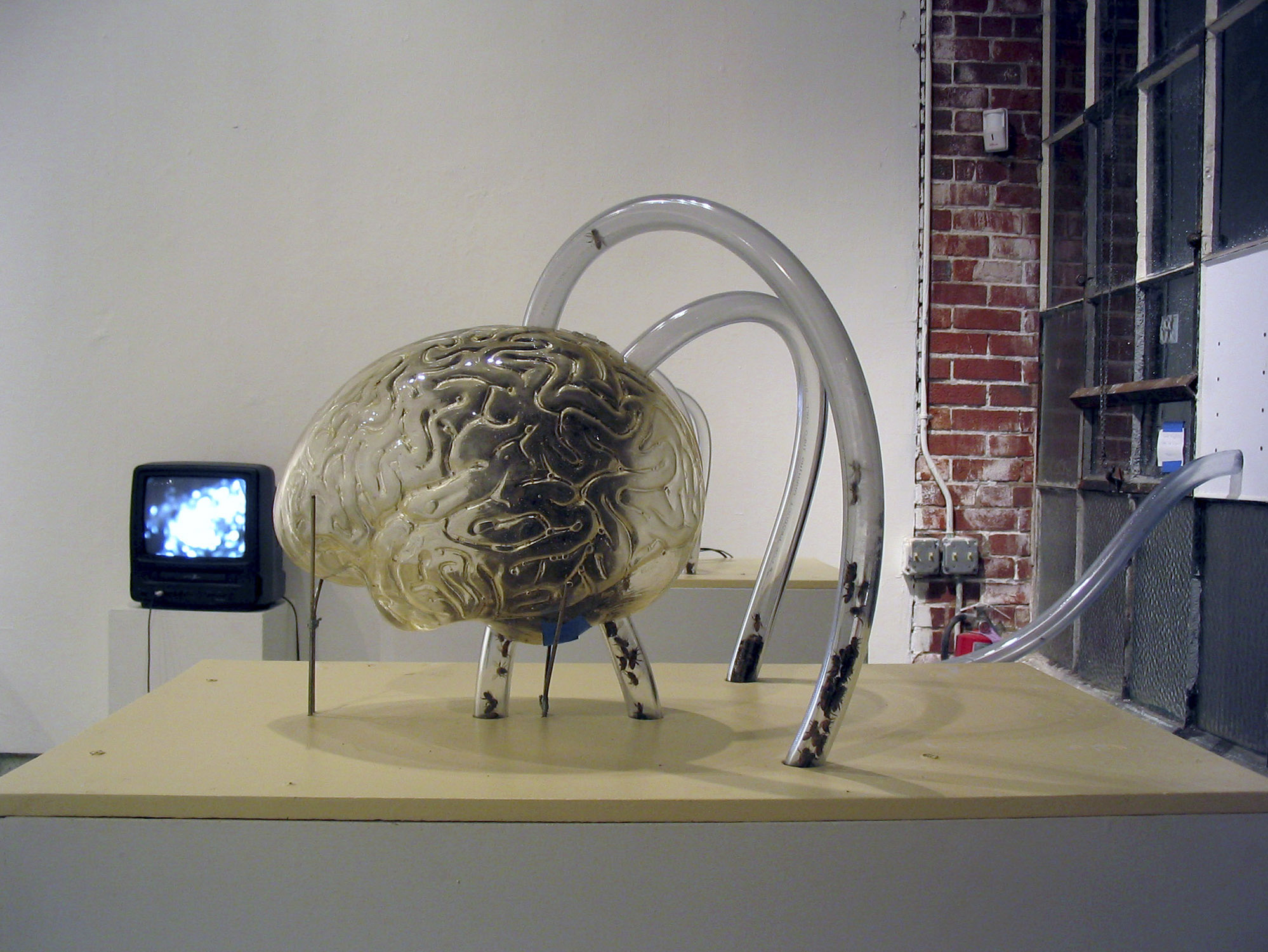


























Installation. Dimensions variable; Two beehives [Apis Melifera], two mini video cameras, two TV sets, polyurethane, wood, acrylic tubing.
Philosopher’s Stone is a process-based installation dependent upon two communities of bees. For a period of one month the bee colonies live in the gallery and collect pollen from the surrounding area. As the beehives grow, each begins to build a honeycomb inside the clear [human] brain shaped forms provided. Two television sets project close-up views from the interior of each brain. The visitors are invited to observe how two beehives develop honeycomb brains, literally, throughout the five weeks of the exhibition.
The main goal of this project was to observe how the genetic programming of the bees, as it relates to the building of the comb, interacts with a predetermined shape – in this case the human brain.
***
The very specific way in which bees are constructing the honey comb is often referred to as “nest architecture”. It is a one of the main elements that characterize social insects in general, and honey bees in particular. The size and the shape of the comb depend on a complex of factors, but the most influential are the geographic and topographic location of the hive, and the weather it is subjected to, during the construction period. The final shape of the honey comb is the result of all the minute transformations the hive goes through during this time. From a structural point of view, the resulting comb should be a hybrid between the biological construction blueprint of the bees and the shape of the human brain.
The intention of the project is to observe the similarities and differences in the “brain development” between the two hives. As a pseudo-scientific experiment it would be interesting to see if two virtually identical hives provided with identical spaces to build into, but having no constraint on where the building process should start, will develop similar or different shaped honey combs.
Because people differ in the pattern of their mental abilities based on the way their brains form, it is all the more interesting to observe if the “beehive brains” will develop differently or not. Further more, the hive is a self-organized system, where self-organization implies that interactions among the system’s components are executed using only local information that is, without reference to the global pattern.
The same definition can be used in describing the way the human brain, and by extension the human society function.